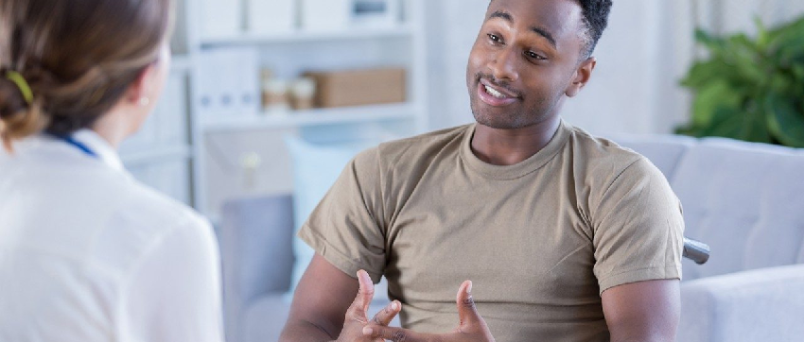We talked to a urologist about everything we need to know about testicular cancer: symptoms, causes, prevention, and detection.
Dr. Javier Romero-Otero, medical director of the ROC Clinic and head of the Urology Service at the HM Montepríncipe and HM Puerta del Sur University Hospitals, explains everything we need to know for beginners about testicular cancer, and everything related to symptoms, causes, prevention, and detection. Once again, and also taking into account that we are in the month of Movember, we want to place special emphasis on treating this type of disease as early as possible.
What Are The First And Possible Symptoms Of Testicular Cancer?
The usual presentation of testicular cancer is a painless mass detected by the man himself, his physician during a genital examination, or as an incidental ultrasound finding. Sometimes, it can also present as a generalized increase in the volume of the affected testicle.
Sometimes the symptoms can include a feeling of heaviness or discomfort in the scrotum, and even in the lower abdomen. In general, it is not accompanied by pain, especially in cases detected earlier.
Some rare testicular tumors can produce hormones that cause a certain increase in the size of the breasts in men (gynecomastia), with increased sensitivity and sometimes loss of sexual desire.
And The Causes Of Testicular Cancer?
The exact cause of most types of testicular cancer is unknown. In general, the appearance of tumor cells is generated due to changes that occur in the genetic material of the cell that activates oncogenes or deactivates tumor suppressor genes.
Few risk factors have been discovered that increase someone’s chance of developing testicular cancer. Most patients with testicular cancer do not have any of the known risk factors.
In this sense, the main factors are components of the testicular dysgenesis syndrome, which includes the undescended testicle (cryptorchidism), hypospadias, decreased spermatogenesis (low-quality semen), or infertility. The risk is also increased if there is a family history of testicular tumors in first-degree relatives or a history of contralateral tumors.
How To Prevent Testicular Cancer?
Because many risk factors cannot be corrected and because a large number of patients who develop testicular cancer do not have them, it is very difficult to prevent the appearance of this type of tumor.
Periodic medical check-ups that include a genital examination can help in the early detection of this pathology.
It is recommended to correct cryptorchidism (undescended testicles) in boys, not only to avoid infertility but also to reduce the theoretical risk of testicular cancer.
Is There A Possibility Of Doing A Self-Examination And Detecting Testicular Cancer? It Serves?
Various scientific societies recommend monthly scrotal self-examination starting at puberty in those patients who have risk factors (such as an undescended testicle, a previous germ cell tumor in a testicle, or a family history), as a precaution to promote early detection. . Young men can also be included in this group, due to the increased incidence at this age.
What Is The Treatment Like Once Testicular Cancer Is Detected?
The main treatment is surgery to remove the testicle (inguinal orchiectomy). In many cases, when the disease is localized and the prognosis is favorable, it is curative. In addition, it allows us to establish the anatomopathological diagnosis and complete the staging. Sometimes it is also necessary to remove lymph nodes.
After the testicle is removed, some patients may receive chemotherapy or radiation therapy to kill any cancer cells that remain. Treatment given after surgery to lower the risk of cancer coming back is called adjuvant therapy.
Chemotherapy results in excellent cure rates in testicular cancer due to its chemosensitivity, particularly with cisplatin-based regimens.
Testicular Cancer Examination: What Does It Consist Of?
The ideal time to self-examine is after a hot shower or bath since the tissue surrounding the testicle is relaxed and abnormal structures can be identified.
Both testicles should be touched with both hands and compared. It is normal for one to be slightly larger and lower than another.
Palpation with the tips of the index and thumb, or index and middle fingers, the entire surface of the testicle. The normal testis is soft, elastic, and ovoid in shape. The elongated structure that runs along the entire posterior edge corresponds to the epididymis.
Are There Still Prejudices In Men When It Comes To Doing It Or Going To The Urologist?
Currently, there are still quite a few men who do not know the benefits of regular urological check-ups. Health professionals have a responsibility to disseminate and transmit the advantages of carrying out these controls. Luckily, there are more and more men interested and concerned about the state of their reproductive system and their sexual health.
You should not have any kind of complex when making an appointment with the urologist. It is always better to detect and treat a pathology at an early stage than when it gives symptoms and, above all, it is preferable, through professional advice, to acquire the habits and attitudes that make it possible to prevent any disease.
You may like to read Can prostate cancer be prevented?

